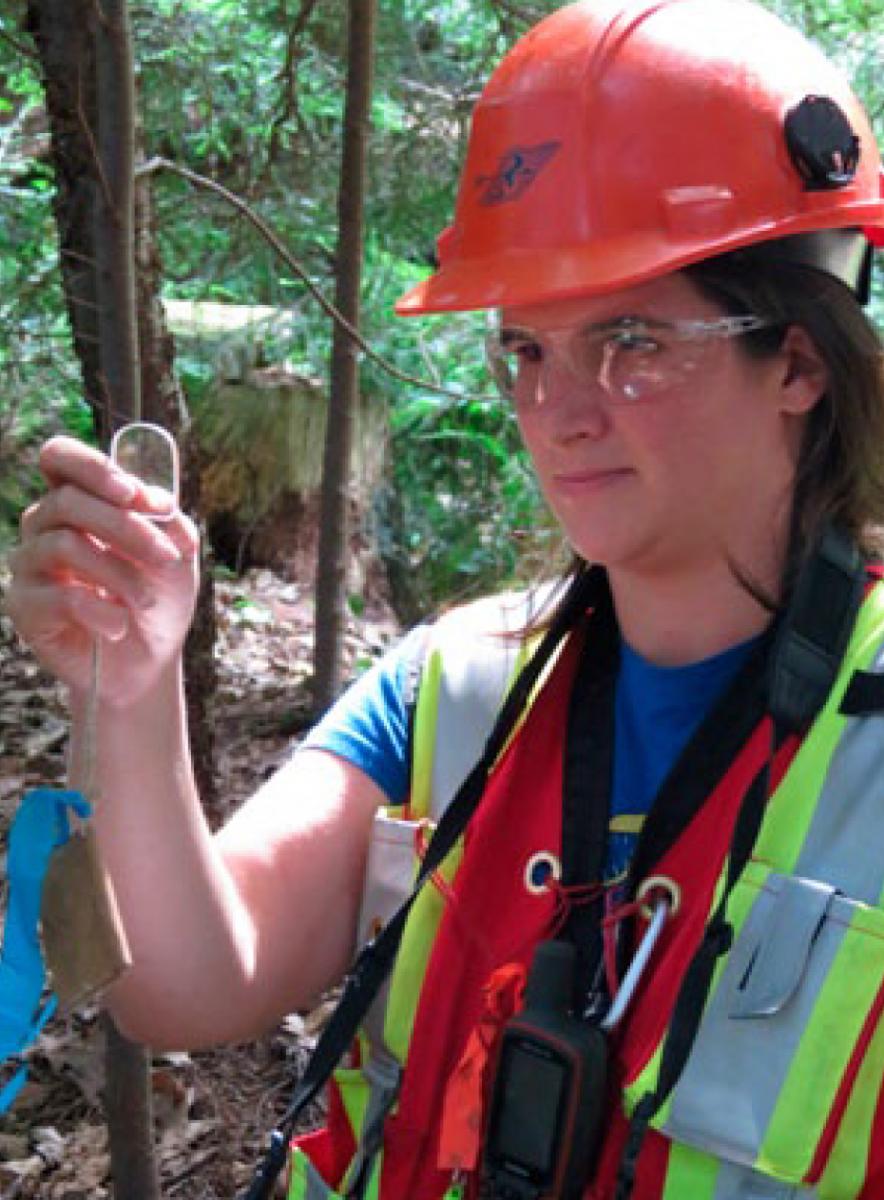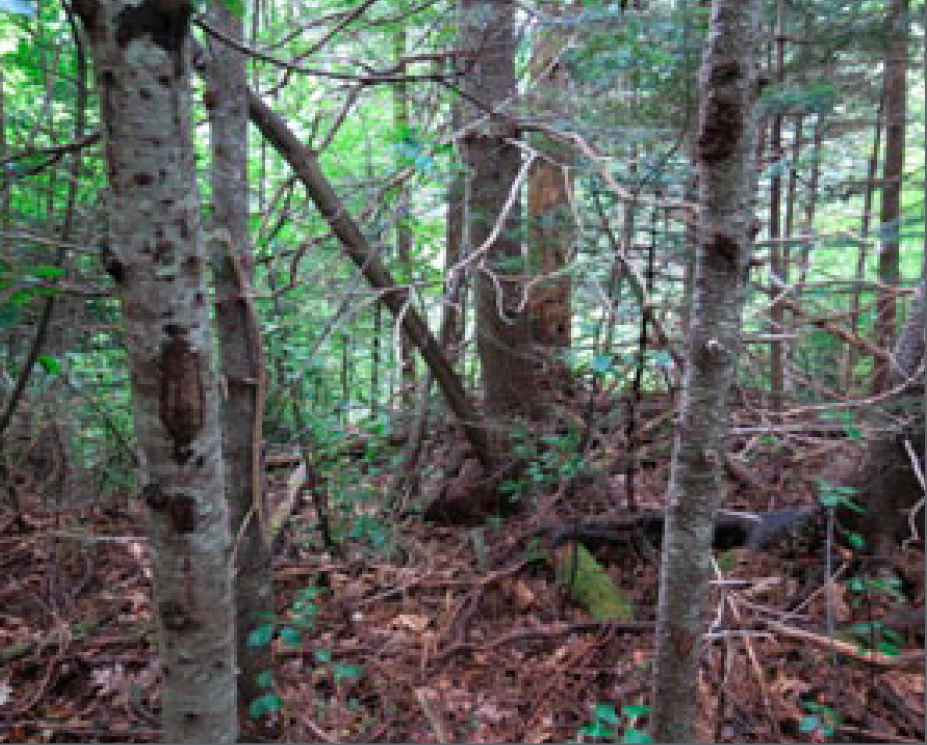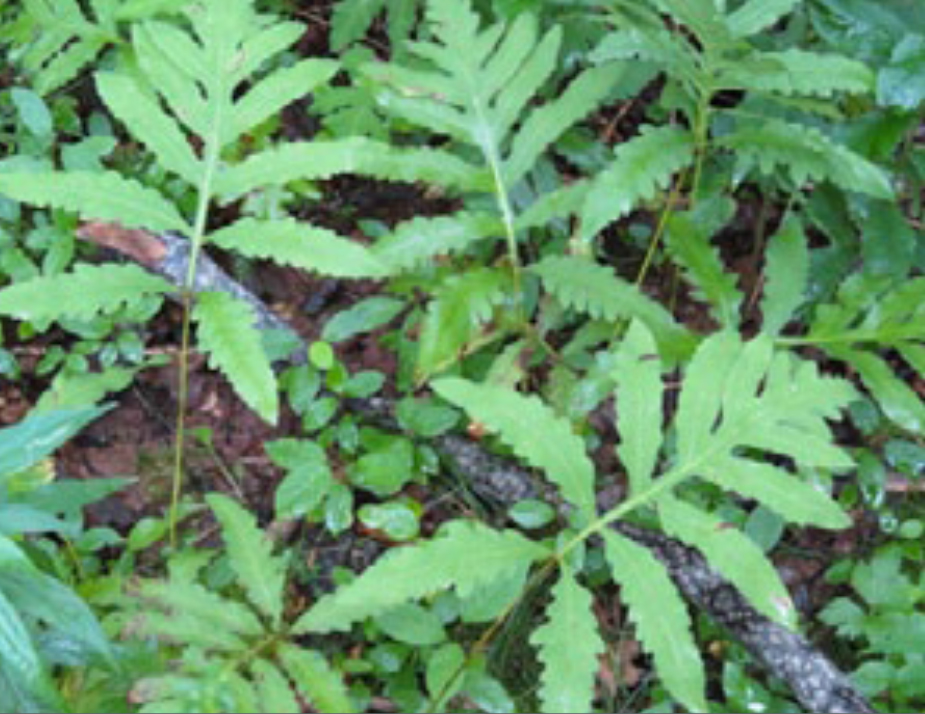Appendix A
Completing a Pre-treatment Assessment
Pre-treatment assessments are done at regular intervals – called plots – over the area of a forest stand. Usually a minimum of five plots should be done in order to have a high degree of confidence that the data is representative of the whole stand.If the stand is less than five hectares, a minimum of five plots should still be done. In stands more than five hectares in size, one plot per hectare is usually done. For example, in a 10-hectare stand, a minimum of 10 plots should be done in order to ensure that the whole stand area is sampled. Sometimes, more plots may be required to accurately assess the site, particularly if the vegetation or soil types change frequently over the site.
 |
| Using a wedge prism |
Once the number of plots has been determined, each plot should be sited at regular intervals over the stand area. This could be at 50- or 100-meter intervals, depending on the size of the stand. At the center of each plot, basal area is determined using a wedge prism, and each tree that is tallied is measured or estimated for diameter in five-centimeter increments. Each tallied tree is assessed for quality, and whether that quality will increase or decrease over the next 15 years.
Basal area is a measure of the distribution and diameter of trees on a forest site, and can be used in calculating standing wood volume. It is measured in m2/ha.
In the case of shade-tolerant, long-lived Acadian forest species - such as red spruce, eastern hemlock, sugar maple and yellow birch - the quality and value of the trees usually do not decrease over 15 years unless they have been damaged. If the trees are healthy, of good form and without obvious physical defects that would lower their value or longevity, they are called Acceptable Growing Stock (AGS).
Some trees, even long-lived ones, often exhibit defects such as scarring or rot, or they may be relatively short-lived species such as trembling aspen and tamarack. There could also be genetic factors that result in forked or crooked stems. The trees are termed Unacceptable Growing Stock (UGS).
 |
| An example of unacceptable growing stock |
In a stand that has been high-graded for decades, perhaps even for generations, one would not expect to find many good-quality trees. On the other hand, trees that are present in a stand that has been managed by selection harvesting are often of better quality, and will usually increase in value in the future if properly tended.
Each tree that is tallied is classed as either AGS or UGS. If there are not enough AGS in the stand, partial cutting may not be warranted. If, however, the landowner’s objectives include restoring Acadian forest tree species and stand characteristics, some partial cutting that will promote these objectives could be undertaken.
 |
|
Ground vegetation – in this case sensitive fern – which is often found on poorly drained sites |
The pre-treatment assessment is not yet complete. The ground vegetation and soil type should be sampled in order to gain a complete picture of the forest ecosystem. The ground vegetation is identified and one or more soil samples are taken with a soil auger. The ground vegetation is typed against descriptions found in the NSDNR publication “Vegetation Types in Nova Scotia”. The soil is sampled for texture, moisture retention and other features such as stoniness and depth. It is identified by using the NSDNR publication “Forest Soil Types in Nova Scotia”.
 |
|
Using a soil auger to assess soil type |
Together, the vegetation type and soil type at each plot will allow the identification of ecosite type, which can be used in helping to provide a harvest prescription for the stand. The ecosite type can be determined with the help of the NSDNR publication “Forest Ecosite Types of Nova Scotia.”
While pre-treatment assessments sound complex, most forest professionals who are familiar with them are able to complete four to six points per hour. It is time well spent when one considers that harvest decision-making is often difficult.